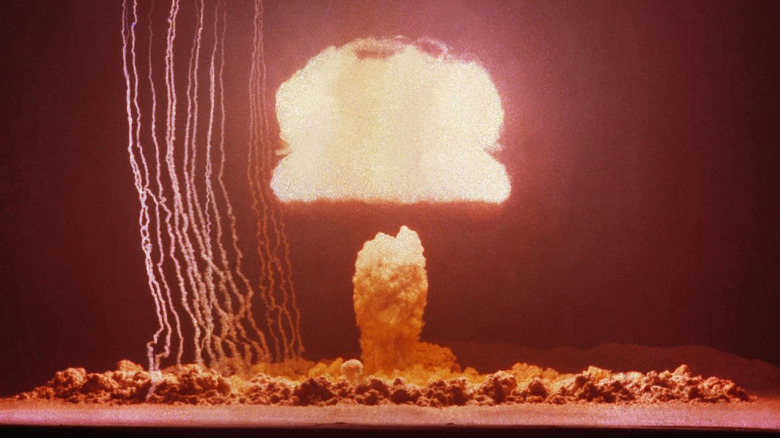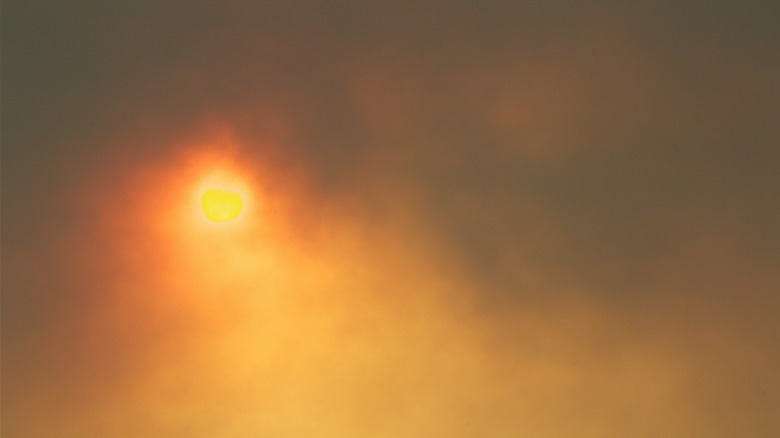What Even The Smallest Nuclear War Would Look Like
If you hadn't noticed, the 21st century is full of threats to our continued existence on the only planet in our universe we know to support life. Climate change is cooking up hurricanes that cross entire continents, extending droughts, and burning down just about everything else. The coronavirus pandemic is proving to have more waves than a baseball game. And, who could forget the ridiculously destructive doomsday weapons we invented for some stupid reason in the mid-20th century?
Apparently a lot of us can forget them. Writing for The Conversation, historian Mattias Eken noted how the public's awareness and fear of the nuclear threat waxes and wanes over time. Although the collapse of the Soviet Union eased the tensions of the Cold War, it also gave rise to new fears that Soviet nuclear weapons could fall into the wrong hands. This fear has become even more acute during the era of the so-called War on Terror.
More and more experts are calling for world powers to ease tensions and disarm their nuclear weapons. In 2020, the Bulletin of Atomic Scientists moved its Doomsday Clock to the closest it has ever come to total annihilation: 100 seconds to midnight. Even actor and everyone's favorite grammarian Stephen Fry is lending his distinctive voice to the conversation. In January 2021, he released a video that explains the full extent of the threat we pose to ourselves.
Even the smallest nuclear skirmish would have disastrous results worldwide
With his educational video production company Pindex, Fry says he "is creating Informed Democracy." And the information conveyed in his video about the nuclear threat is absolutely chilling. He starts off with a few fun facts about the effects of a hypothetical detonation of the world's largest nuclear weapon: everything within a 5 kilometer radius would be vaporized, and very little within 9 kilometers would survive. Really, you wouldn't want to be within 50 kilometers of this thing.
Actually, you wouldn't want to be anywhere on Earth if we were to get into even the smallest of nuclear wars. Fry explains that if two of the world's smallest nuclear powers, India and Pakistan, were to wage nuclear war, the consequences would be felt the world over. The smoke from the bombs would make its way around the globe in a matter of weeks, hanging out for years at an altitude too high for rain to wash it away. It would block out the sun for years, affecting food supplies and killing an estimated 1-2 billion people from starvation alone.
Anything larger than that, say nuclear war between the United States and Russia, would pretty much be game over. It would wipe out civilization as we know it and leave a desolate world behind for anyone unlucky enough to survive. Neither one is a good option, so hopefully more world leaders listen to the scientists on this one.

